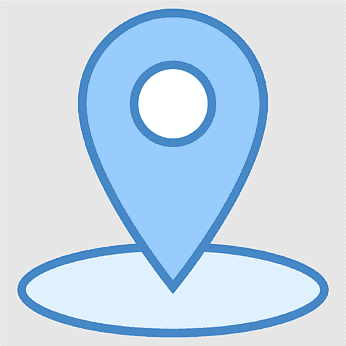Geofencing is a location-based service that allows businesses to create a virtual boundary around a specific location, enabling them to trigger specific actions when a device enters or leaves this defined area. This technology has been revolutionising how businesses connect and manage their resources, and its potential for future innovations is tremendous.
How Does Geofencing Work?
Geo-fencing works through a combination of GPS (Global Positioning System), Wi-Fi, and cellular data. The process begins with defining a virtual boundary or ‘fence’ around a particular geographic area.
This could be around a physical store, a city block, or even an entire city. Once this virtual boundary is established, businesses can set up triggers that send text messages, email alerts, or app notifications when a mobile device enters (or exits) the specified area.
The technology uses a mobile device’s GPS or RFID (Radio Frequency Identification) to track its location in real-time. When the device crosses the virtual boundary, the geo-fence responds by executing the pre-programmed actions.
Geofencing in Practice
Several well-known companies use geo-fencing to enhance their customer engagement and operational efficiency. There are several marketing applications as well as employee management applications to geo-fencing.
For example, the coffee chain Starbucks uses geo-fencing to send personalised offers to customers when they are near a Starbucks outlet.
Meanwhile, Uber leverages geo-fencing to manage its fleet of drivers, indicating where demand is high and directing drivers to those areas. This increases the likelihood of the service being utilised and revenue generation.
Walmart, another prominent user of this technology, has integrated geofencing with their mobile app to improve the shopping experience. When customers enter a geo-fenced area around a Walmart store, the app switches to ‘Store Mode,’ providing store maps, product location information, and deals specific to that location.
Uses in Australia
Geo-fencing has been generally adopted by numerous industries in Australia. Here are examples based on the broad industry trends and specific applications of geo-fencing.
Retail and Food Industry
Major retail chains like Woolworths and Coles likely utilise geo-fencing for targeted marketing, similar to Walmart’s strategy in the US. Fast-food chains like McDonald’s also use this technology to send promotional offers to customers in proximity to their outlets.
Real Estate
Real estate companies employ geofencing to alert potential buyers about open houses or new listings within their vicinity.
Transport and Logistics
Companies like Toll Group or Brambles could use geofencing to track and manage their fleets, enhancing delivery efficiency and security.
Benefits of Geofencing
Geofencing offers a wealth of benefits for businesses of all sizes and types. Here are some ways it can work for small, medium, and large-sized businesses:
- Targeted Marketing: Geo-fencing allows businesses to deliver personalized ads and promotions to customers based on their location. This can significantly improve the effectiveness of marketing campaigns.
- Enhanced Customer Experience: By providing location-specific content and services, businesses can significantly enhance the customer experience. For example, a restaurant could send a menu to a customer when they are nearby, enticing them to visit.
- Improved Resource Management: For businesses with mobile workforces, geofencing can be used to track and manage employees. For instance, a delivery company can use geo-fencing to monitor their drivers and ensure they are following the correct routes.
- Security: Geofencing can also be used to enhance security. For example, a company could set up a geofence around its premises and receive alerts whenever an unauthorized device enters the area.
- Data Collection and Analysis: The data collected through geo-fencing can provide valuable insights into customer behaviour and trends, helping businesses make more informed decisions.
Moreover, for businesses with employees working from home due to recent global trends, geo-fencing can be utilised to monitor work hours and productivity.
By setting up a geo-fence around an employee’s home, businesses can track when an employee starts and ends their workday, ensuring accountability and productivity.
Geofencing in the news
In terms of news reporting in Australia, geofencing has often been discussed in the context of its various applications, particularly related to marketing, security, and even public health.
For instance, during the COVID-19 pandemic, geofencing was reported as a tool for enforcing quarantine rules for international and interstate travellers. It was seen as a more cost-effective and efficient method of ensuring compliance with self-isolation requirements.
Geo-fencing continues to form part of a broader global conversation about data privacy in the digital age of marketing and employee management.
How PeopleKey can help with your employee management
Geo-fencing is a powerful tool that can provide businesses with enhanced capabilities, improved resource management, and better security. As more businesses adopt this technology, we can expect to see even more innovative and creative applications of geo-fencing in the future.
Via PeopleKey Nexus, for a monthly subscription, our clients can set up geofencing locations tailored to their needs. This includes setups as virtual devices, the ability to assign cost codes as well as rules around notifications and exceptions.
For an obligation-free demonstration and to learn more call ☎️ 1800 015 458.

0 Comments